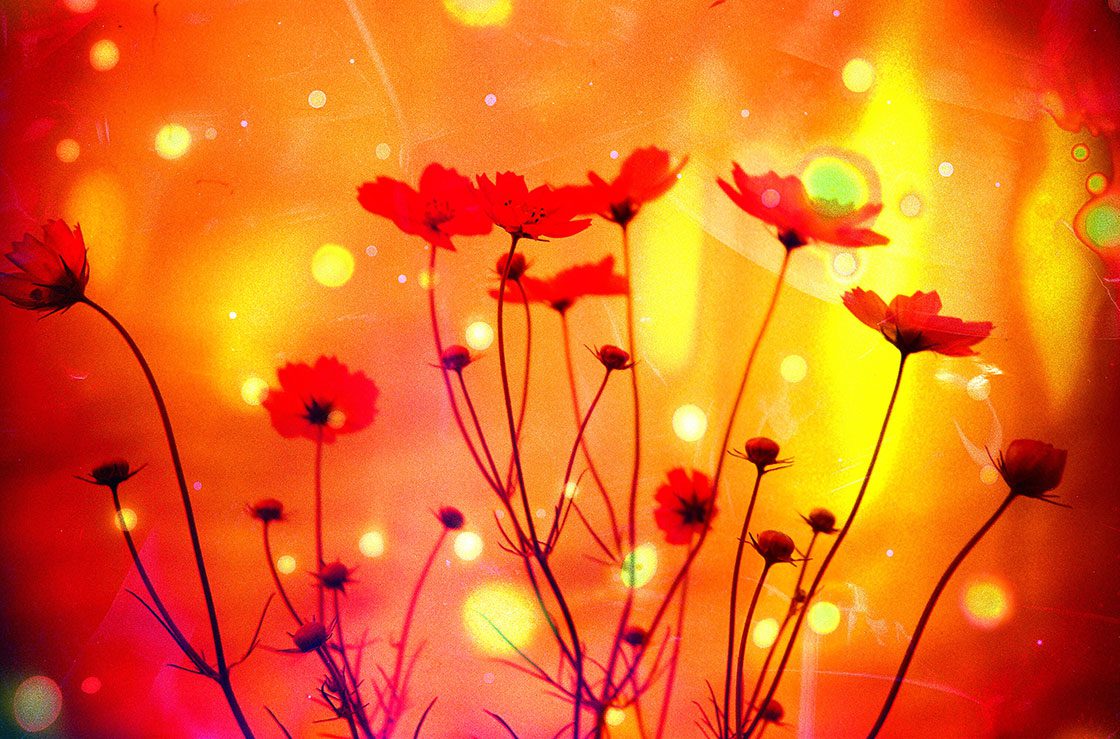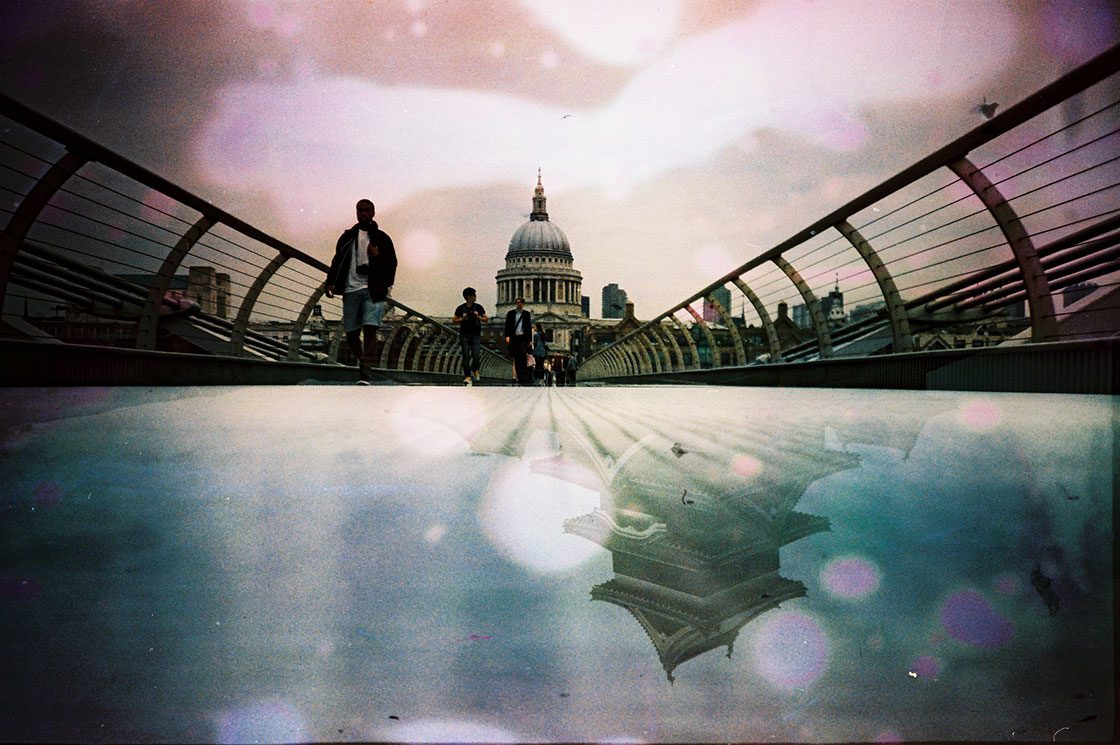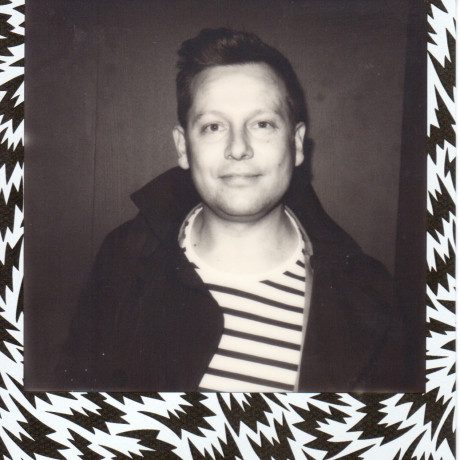Shoot & Destroy
‘Film Soup’ is a term relating to the process of distressing or destroying the chemicals on a roll of film before having it developed. To enter into this yourself, you can use just about anything to cause the damage; vinegar, washing up liquid, lemonade, coffee, or even naked flames!
Lots of people, shooting with Lomography cameras, have taken to it, experimenting with treating their films before and after use, drying them for weeks or putting them straight in the camera, the choices are endless.
These two photographers, however, have taken their film soup exploits to an absolute next level. Toby Mason, who’s based in London, and Hodaka Yamamoto [AKA Hodachrome] from Gifu, Japan, have sent their films flying around the globe with the sole aim of giving them ‘the treatment’. In these pictures, the rolls were shot first by Hodaka in Japan, then being sent on to Toby in London to be double-exposed and then distressed by him.
Take a look at their results here. They have to be some of the most exciting and inspiring pictures we’ve seen in a very long time. Also, Toby and Hodaka/Hodachrome explain the processes and intentions behind the destroying of their film.
The film was then developed at Asda, and scanned at The Vault in Brighton [the Lomography lab in London refused to process it]
Toby Mason: After shooting the roll of film, I mixed together some boiled water with silica gel and washing detergent, and left it to cool a little. Then I went into my makeshift darkroom and pulled out the film from the canister. Next I flicked and dabbed the “soup” onto the exposed film. I waited for a few minutes and then rewound the film into the canister. Afterwards I went to the kitchen and dropped the film into just-boiled water, and after five minutes I transferred it into cold water for a minute. Then back in the darkroom I pulled the film out from the canister again and dried it with a hairdryer, and when done I rewound the film. The film was then developed at Asda, and scanned at The Vault in Brighton [the Lomography lab in London refused to process it].

My inspiration for dipping my toes into ‘film soup’ was down to having seen some really cool, psychedelic results from a few Flickr contacts of mine, which in turn, led me to look further into the techniques that people were using to create such images. We see so much digital manipulation of images nowadays so I find it extremely satisfying to produce results, which people can’t necessarily work out how they were achieved. They’re all produced using light, film, paper and chemicals. That’s it.
I was a little concerned when working on my film soup projects, particularly the film-swap projects. As I unrolled the exposed film from the canister and started dabbing and flicking the mixture onto it in the dark, it was at the forefront of my mind that Hodaka had first spent weeks shooting this roll of film in Japan and that it had then been posted to me in the UK. I had then spent a several weeks shooting my layer. Film swaps can be random enough without the extra complication of film soup and we don’t confer on subjects, so the images are all completely random, but we were both keen to try this out and knew that if it all worked, the results would make it worthwhile – hopefully.
For me, the technique of ‘film soup’ is simply a way to express the infinite possibilities of analogue photography.
Hodaka Yamamoto//Hodachrome: For me, the technique of ‘film soup’ is simply a way to express the infinite possibilities of analogue photography. It’s true that film is becoming a more precious resource, but I believe there is one and only art field that can only be represented using film photography. For me, this technique is an attractive means, which can represent the taste of the film, particularly when combined with cross processing [ask your local lab] and multiple exposure. Using these elements, it’s possible for me to create fantastic pictures.”



